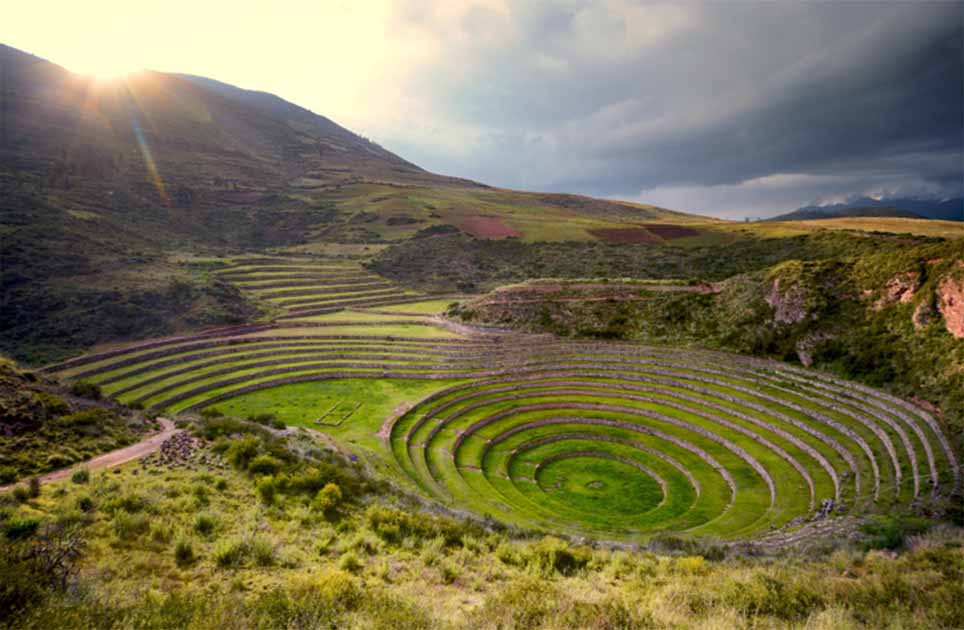10 Jaw-dropping Engineering Marvels of the Inca Empire
The Inca were an illustrious ancient civilization, whose sprawling empire stretched from Ecuador to the north, to central Chile in the south. Many of the remnants of their incredible civilization are found today in Peru, both along its coasts, and in its rugged highlands. The Inca were enigmatic in many ways - possessing incredible architectural skills that often defy all sense of logic. They were true ancient engineers - and many of their secrets are forever lost to time. Here are 10 of their most famous engineering marvels.
1. The Lone Jewel on the Mountaintop, Machu Picchu
Perhaps the most famous of all Inca ruins is the magnificent Machu Picchu, the self-sufficient citadel and royal residence. Today, it is considered as the most recognizable symbol of the Inca, and for years it was called their “Lost City”. The site is situated on a 2,430-meter (7,970 ft) mountain ridge, in inhospitable terrain where one would never imagine a settlement to stand. And yet, the ingenious Incas managed to create a thriving community so high up in the mountains.
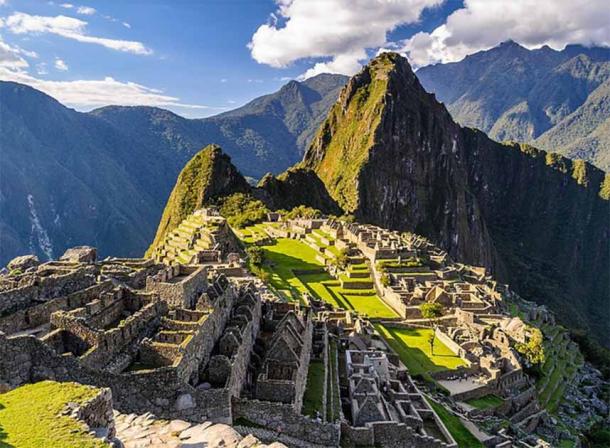
View from south to north. To the left you can see the Hanan sector of the city (with the pyramidal structure of the Intihuatana hill) and to the right the east sector, separated by the main square. In the background the Cerro Huayna Picchu. (Zielonamapa.pl/CC BY-SA 2.0)
Machu Picchu is located above the Sacred Valley, 80 kilometers (50 mi) northwest of Cusco, with the important Urubamba River flowing past it. The important citadel was likely built as a royal estate for Emperor Pachacuti, also called Pachacutec (1438–1472), sometime around 1450 AD. However, it was abandoned just a century later, as the Spanish Conquistadors ravaged the Inca Empire.
The entire citadel of Machu Picchu is an engineering marvel in itself - a pitch-perfect commune that was created on top of a steep mountain point. And even so, it had all the comforts of life - storage buildings, housing, incredible agricultural terraces, as well as a stunning Temple of the Sun. For centuries all of these structures were hidden beneath dense foliage, until their rediscovery in 1912. Today, it remains an incredible window into the ingenuity of the ancient Incas.
2. The Impregnable Citadel of Sacsayhuamán
The vastness of the Inca empire had to be defended from any would-be attackers. The mighty citadel of Sacsayhuamán is a mind-boggling archaeological site located on a hill overlooking the city of Cusco, Peru. The site is believed to have been built by the Inca civilization during the 15th century, during the reign of Sapa Inca Pachacuti, and served as a military fortress and religious center.
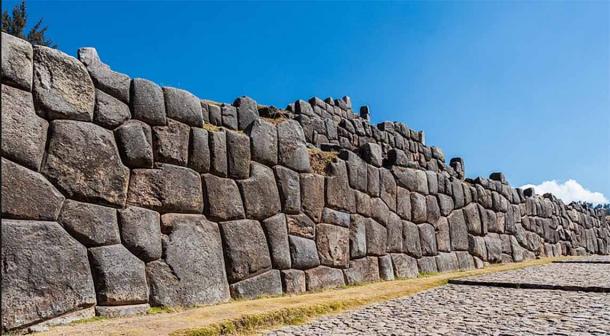
Sacsayhuamán, Cusco, Perú (Diego Delso/CC BY-SA 4.0)
The thing that Sacsayhuamán is most noted for are its massive stone walls, which feature impressive stonework and some truly awe-inspiring engineering feats. The impregnable citadel walls were constructed using massive stone blocks that weigh up to 200 tons, and were fitted together so tightly that it is said a piece of paper cannot fit between them. How did the Incas achieve such an incomprehensible architectural feat? Many theories exist, but none can say for certain how the process looked like. The site also features a number of other structures, including temples, palaces, and fountains, all of which captivate with their grandeur.
Today, Sacsayhuamán is a popular tourist destination and is recognized as a UNESCO World Heritage site. It is an incredible feat of human skill, and one of the most renowned Inca sites.
3. Qhapaq Nan, The Great Inca Road
In order to control such a large empire and to make everything function as it should, the Inca had to create a reliable road network. It wasn’t an easy task, but they did it, nevertheless. The result is Qhapaq Nan, also known as the Great Inca Road - a vast network of roads and footpaths that spanned more than 20,000 miles (more than 32,000 km) throughout the Andes Mountains of South America. The road system served as a vital communication and transportation network for the Inca civilization and connected many of their major cities and settlements.
The Qhapaq Nan was built over several centuries, beginning around the 15th century AD, and was constructed primarily using stone and gravel. The road system features numerous impressive feats of engineering, including suspension bridges, tunnels, and switchbacks. The roads were also lined with waystations and storage depots, which provided food, water, and shelter for travelers. The Great Inca Road connected the coastal and the mountainous parts of the empire, making traveling easy and less dangerous.
Today, many sections of the Qhapaq Nan are still in use, centuries later - it was that well-made. And it only serves as proof of incredible Inca skill.
- Inca Empire Constructed Over 40,000 Kms of Roads and Superhighways in 100 Years
- The High-Tech Stonework of the Ancients: Unsolved Mysteries of Master Engineers
4. Ollantaytambo and its Impregnable Walls
The Inca city of Ollantaytambo is an archaeological site located in the Sacred Valley of Peru, approximately 72 kilometers (45 miles) northwest of the city of Cusco. It is believed to have been built by the Inca civilization during the 15th century AD and served as a military, religious, and agricultural center.
Ollantaytambo is renowned for its truly impressive fortress, which features massive stone terraces and walls that rise up to 60 feet high (18 m). And once again, science was baffled by the skill and mastery with which these stone walls were built. Some of the pieces are incredibly heavy, but still placed with absolute precision and a tight fit. The site was strategically placed as to defend against attacks from hostile neighboring tribes, and played an important role in the Inca resistance against Spanish conquistadors. Its position and impregnable walls made it an easily defendable site.
In addition to the fortress, Ollantaytambo features a number of temples, palaces, and other structures, all of which showcase the remarkable engineering and architectural skills of the Inca civilization. The site also features a sophisticated system of canals and aqueducts, which were used for irrigation and water management. In its heyday, Ollantaytambo was a sprawling Inca city that had all the comforts of life, and was also well protected. It is a bustling city today as well, and many original Inca structures, houses, and doorways are still in daily use.
Ollantaytambo is a very popular tourist destination and is recognized as a UNESCO World Heritage site. When traveling to the area, you cannot miss visiting it.
5. The Stunning Terraces of Moray
One of the foremost accomplishments for which the Inca were praised was their mastery of agriculture in an otherwise inhospitable and rugged terrain. With their unique system of terraces and irrigation, they became the true masters of growing crops. And the Inca city of Moray is an ideal example of this. It is an archaeological site located in the famed Sacred Valley of Peru, approximately 50 kilometers (31 mi) northwest of the city of Cusco. It consists of several terraced circular depressions in the ground, which were used by the Incas for agricultural experimentation and research.
The circular depressions at Moray range in depth from approximately 30 to 150 feet (10 to 45 m) and are arranged in a series of concentric rings. The terraces were likely used to simulate different microclimates, which allowed the Incas to experiment with different crop varieties and growing conditions. The temperature difference between the top and the bottom levels of these terraces can be as much as 5 °C (9 °F), allowing for different growing conditions. Furthermore, the terraces are connected by a complex system of channels and canals, which allowed for precise control of water flow and irrigation.
Moray is believed to have been built during the 15th century AD by the Inca civilization and served as an important agricultural research center. The site is considered a remarkable example of Incan engineering and agricultural innovation and is recognized as a UNESCO World Heritage site.
- Do the ancient stone walls of Saksaywaman in Peru contain hidden communication?
- 15 Incredible Ancient Buildings and Structures (Video)
6. Tipon Showcases the Hydraulic Engineering of the Incas
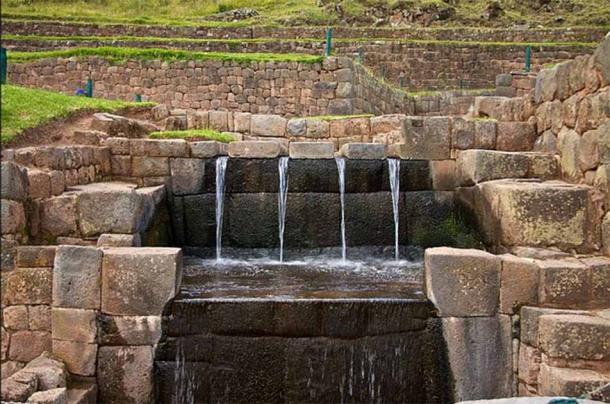
Ancient water spouts at Tipón, Peru (CC BY 2.0)
Did you know that the Incas also mastered hydraulic engineering? Their majestic city of Tipon is a remarkable example of this. This archaeological site is located in the Cusco region of Peru, approximately 15 kilometers (10 mi) southeast of the city of Cusco. It is situated on a hillside at an altitude of about 3,400 meters (11,154.86 ft) above sea level and covers an area of approximately 6.5 hectares. Tipon was built by the Inca civilization around the 15th century AD and likely served as a royal estate and an agricultural center. The site contains a sophisticated system of terraces, canals, and aqueducts, which were designed to irrigate the crops and gardens that grew on the terraced hillsides. The engineering prowess of the Incas is evident in the precision of the stonework and the complexity of the hydraulic system. The terraces are so well built that they remain incredibly well preserved today.
One of the most impressive features of Tipon is the extensive system of water channels and fountains, which were used for both irrigation and aesthetic purposes. The channels are made of finely cut stone and are carefully aligned to maximize water flow. The fountains are adorned with intricate carvings and were likely used for ceremonial purposes as well.
7. Raqch’i Venerated Viracocha
Religion played a great role in the daily lives of the Incas. Their once-majestic city of Raqch'i is located in the southern highlands of Peru, and is believed to have been built by the Inca civilization during the 15th century AD and served as an important administrative and religious center.
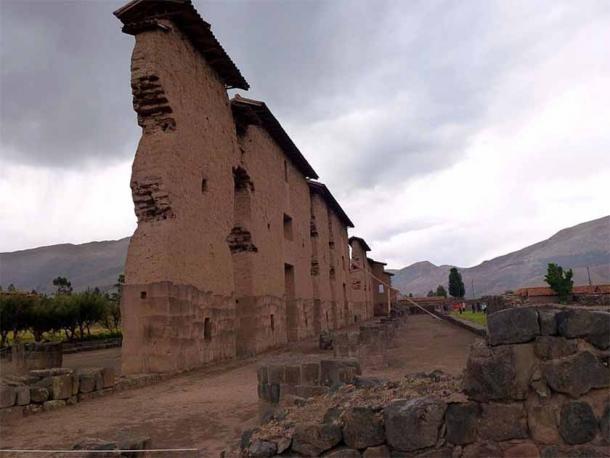
Central wall of the Temple of Viracocha in Raqch'i, Peru. The bases of the circular columns that in the past supported the roof of this large temple are still visible. (PIERRE ANDRE LECLERCQ/CC BY-SA 4.0)
Raqch'i is renowned for its massive temple complex, which features a rectangular courtyard surrounded by a series of impressive, titanic stone walls. The temple is truly enormous, and measures 92 meters (302 ft) by 25.5 meters (84 ft). It is dedicated to Viracocha, the great creator God of the Inca, and their most important deity. The temple complex also includes a number of smaller buildings and structures, as well as a sophisticated system of irrigation canals and terraces.
The site is also notable for its extensive agricultural terraces, which were used to grow crops such as potatoes, quinoa, and corn. The terraces feature a complex system of irrigation channels and are a testament to the impressive engineering skills of the Inca civilization - in all spheres of their lives.
8. Pisaq, The Royal Estate and its Irrigation Canals
Built in the Inca heyday during the 15th century AD, Pisaq (Písac) was an important royal estate and city, which served as a religious and agricultural center. Its ruins are situated some 20 miles (33 km) northeast from Cusco.
Pisaq is renowned for its truly impressive agricultural terraces that leave every visitor in awe. They were used to grow crops such as corn, potatoes, and quinoa (the staples of Inca diet) - with incredible success. These terraces feature a truly sophisticated system of irrigation canals and are a testament to the impressive engineering skills of the Inca civilization. The level of expertise with which they were constructed allowed them to remain almost perfectly preserved - after centuries.
The site of Pisaq is also notable for its monumental stone structures, which include a series of temples, palaces, and other buildings. It was an important city of the Inca. Alas, it was completely devastated and destroyed in the 1530s by the Spanish conquistadors, headed by Francisco Pizarro. The modern settlement of Pisaq arose in the shadow of these noble ruins.
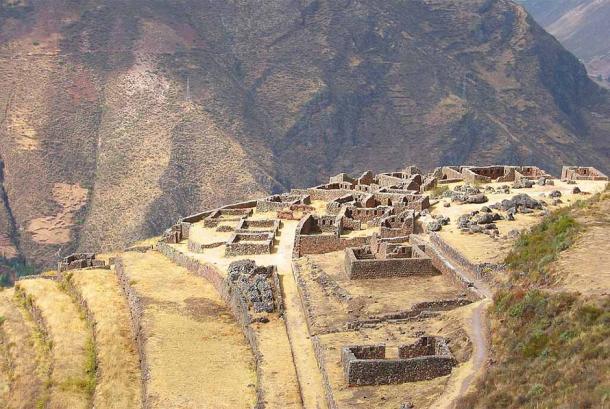
The Pisaq residential area. (Public Domain)
9. Choquequirao Sanctuary
Nestled in the breathtaking Andes Mountains of Peru, just a stone's throw away from the world-famous Machu Picchu, lie the majestic ruins of Choquequirao, an ancient Incan citadel city whose lofty position and ambience won’t fail to invoke a sense of wonder and grandeur. Built in the 15th century AD as a sacred sanctuary and royal estate, this awe-inspiring site remained hidden from the eyes of the world until the early 20th century.
Spanning a vast area of 1,800 hectares, Choquequirao boasts an impressive collection of well-preserved structures, from sprawling plazas to ornate temples and residential quarters. However, its most striking feature is a colossal terraced complex that spans over 2,500 square meters and comprises two levels of buildings, agricultural terraces, and a serene ceremonial fountain. These terraces were built on steep hillsides and rugged terrain, and were even so a functioning source of abundant crops.
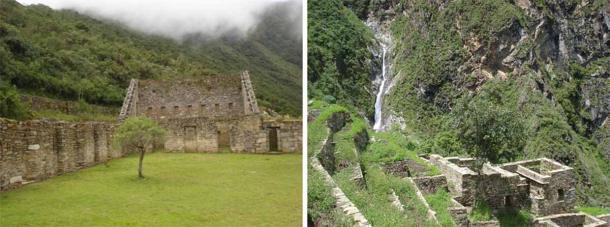
Left: Main Plaza at Choquequirao. (CC BY-SA 3.0) Right: Remains of Inca houses at Choquequirao (CC BY-SA 3.0)
Despite its undeniable allure and stunning views of the surrounding mountains and valleys, Choquequirao remains a hidden gem due to its remote location and challenging accessibility. It takes a lot of hiking in rugged terrain in order to reach the site. But even so, for those who dare to venture away from the beaten path, this hidden treasure offers a unique and captivating glimpse into the fascinating daily life and religious practices of the Inca people. Don't miss out on the opportunity to discover one of Peru's most extraordinary and least-known wonders!
10. Tambo Colorado, the City of Colored Houses
Tambo Colorado is an Incan archaeological site located in the Pisco Valley of Peru, and was built during the reign of the Inca emperor Pachacutec in the mid-15th century. This unique city served as a strategic administrative and military center for the Inca Empire, after the region was annexed from the Chincha culture.
The name Tambo Colorado means "Red Tambo" in Spanish, referring to the red color of the adobe walls. It is likely that all the buildings in the town were adorned with bright colors, and many of them can still be seen today. The site covers an area of about 6 hectares and includes several well-preserved buildings, including a large central plaza, residential quarters, and administrative buildings. Observing these majestic ruins, we can understand the complexity of the Incan Empire, and the importance of keeping the coastal and highland regions connected and controlled.

Panorama of Tambo Colorado. (Eric Bronder/CC BY-SA 3.0)
One of the most notable features of Tambo Colorado is the complex network of channels and canals that were used for irrigation and agriculture. Wherever the Incas chose to settle, they brought their advanced knowledge of agriculture with them. The site also includes a number of rooms and chambers that were used for storage and as living quarters. This means that Tambo Colorado had all the necessities for the thriving life of many citizens.
Top image: Sun over Moray, Sacred Valley of the Incas, Peru. Source: alexpermyakov/Adobe Stock
References
Covey, A. R. 2020. Inca Apocalypse: The Spanish Conquest and the Transformation of the Andean World. Oxford University Press.
D’Altroy, T. N. 2014. The Incas. John Wiley & Sons.
Malpass, M. A. 1996. Daily Life in the Inca Empire. Greenwood Publishing Group.


















